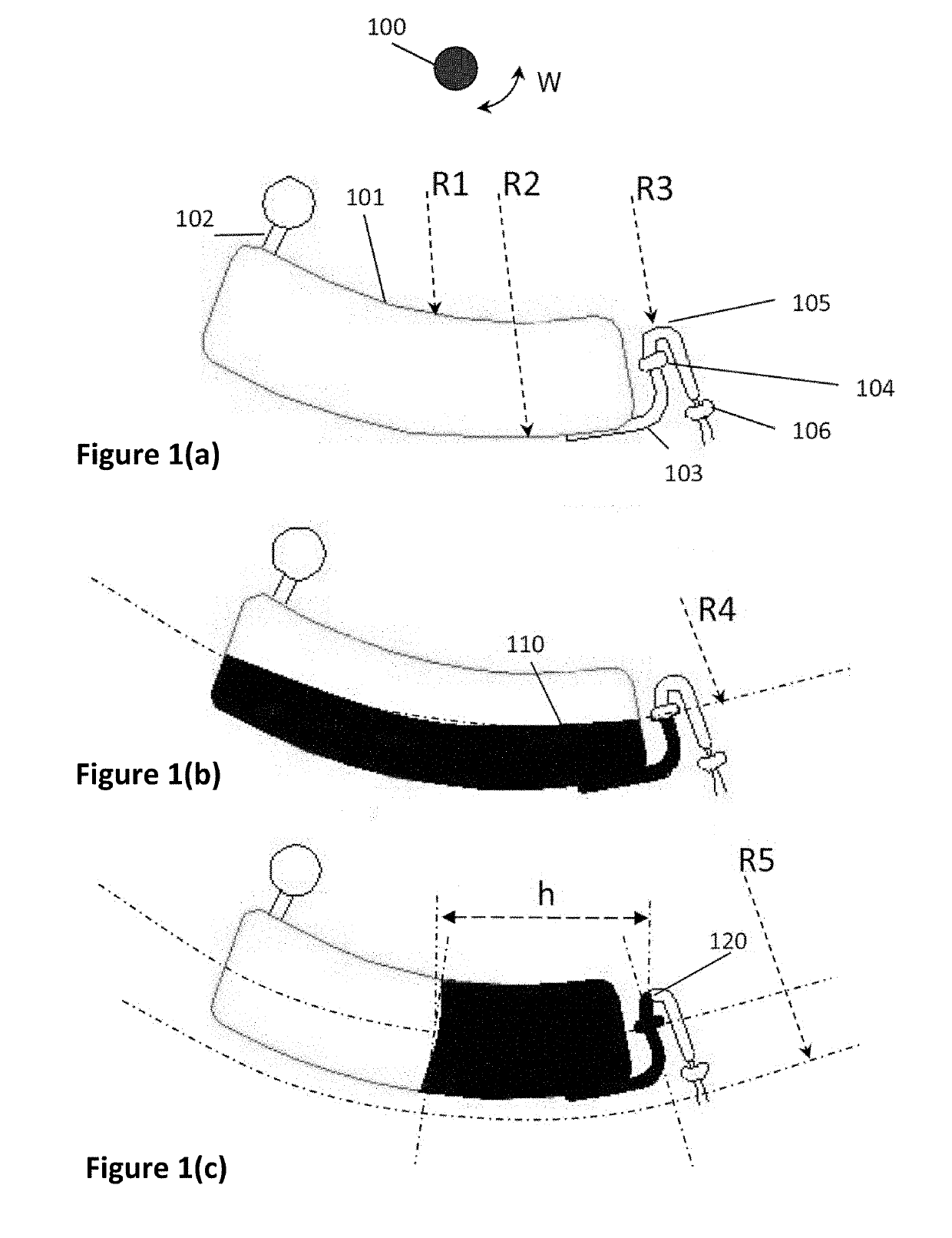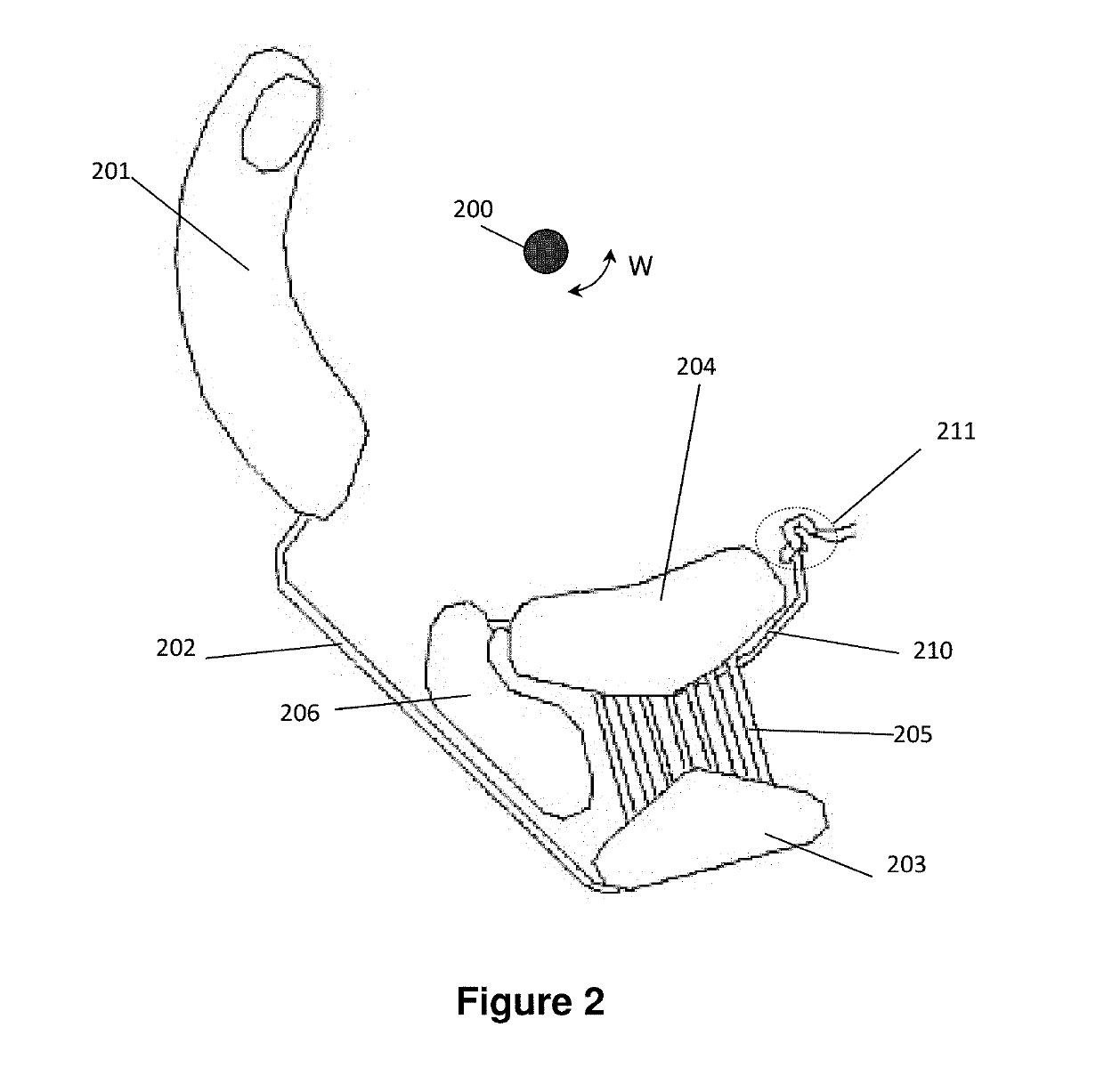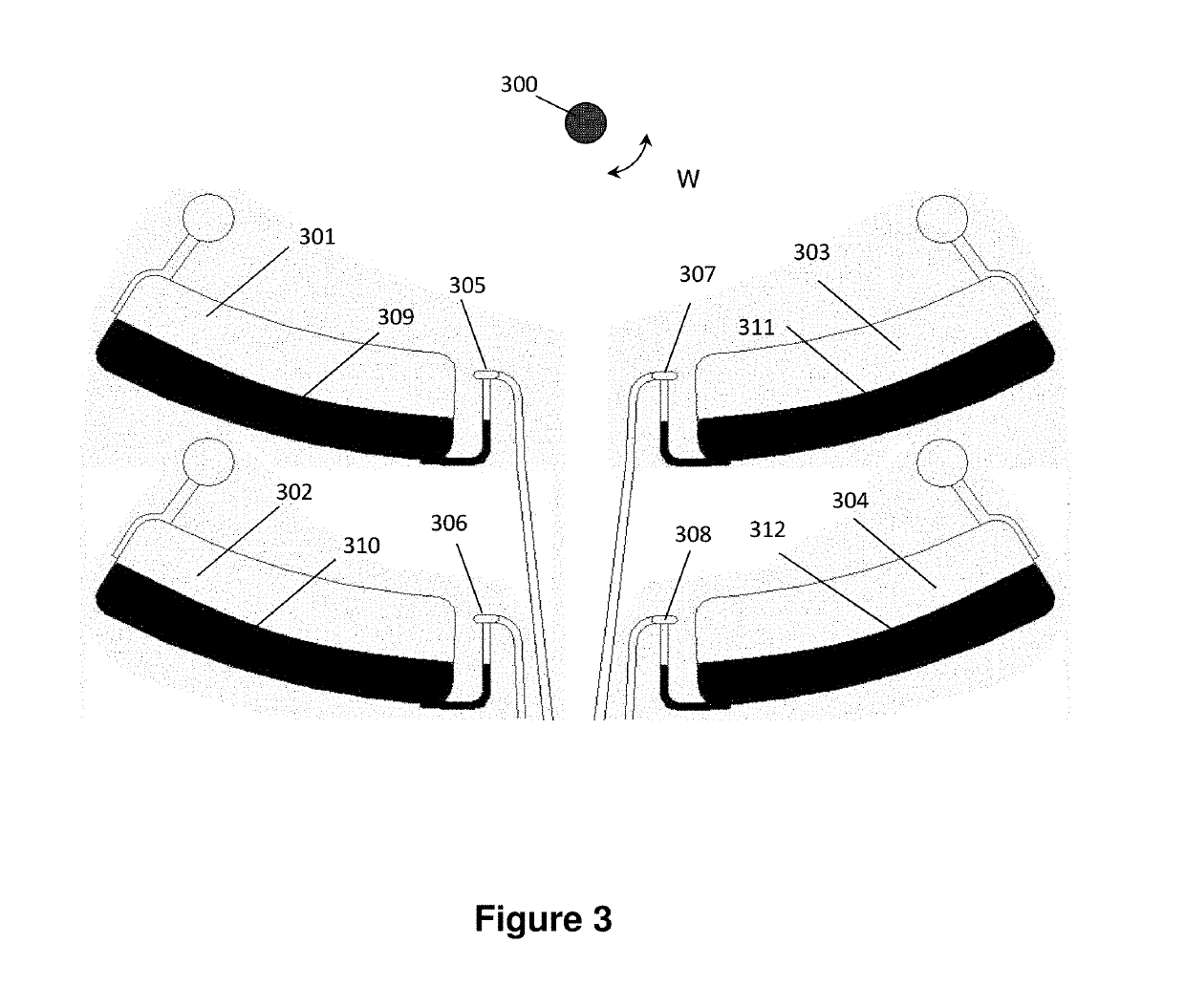Acceleration-Primed Valving System for Centrifugal Microfluidics
a valving system and centrifugal microfluidic technology, applied in fluid controllers, laboratory glassware, laboratory apparatus, etc., can solve the problems of inability to retain liquids in the chamber at low rotational velocities, inability to manually determine the cellular/biological content of various types of samples, and in particular samples that contain living cells
- Summary
- Abstract
- Description
- Claims
- Application Information
AI Technical Summary
Benefits of technology
Problems solved by technology
Method used
Image
Examples
Embodiment Construction
[0049]FIG. 1 presents a disc structure which provides an embodiment of an acceleration-primed valve. In FIG. 1(a), a disc rotating around a centre or axis 100 with angular velocity W comprises a holding chamber 101 dimensioned to have an inner radial wall of radius R1 and outer radial wall of radius R2, an input channel 102 and output channel 103. An acceleration-primed valve system is illustrated comprising a capillary valve 104 and a goose-neck shaped outlet channel 105, which extends radially inward from the capillary valve, having an innermost portion that is radially outward, R3, of the innermost portion of the holding chamber, R1.
[0050]An optional capillary valve 106 at the output of the outlet channel may be used to control the time at which the fluid flow is delivered to the receiving chamber once the acceleration-primed capillary valve 104 is defeated or opened.
[0051]In FIG. 1(b), the disc rotates at an initial angular velocity W1 in a clockwise direction. As illustrated, a...
PUM
 Login to View More
Login to View More Abstract
Description
Claims
Application Information
 Login to View More
Login to View More - R&D
- Intellectual Property
- Life Sciences
- Materials
- Tech Scout
- Unparalleled Data Quality
- Higher Quality Content
- 60% Fewer Hallucinations
Browse by: Latest US Patents, China's latest patents, Technical Efficacy Thesaurus, Application Domain, Technology Topic, Popular Technical Reports.
© 2025 PatSnap. All rights reserved.Legal|Privacy policy|Modern Slavery Act Transparency Statement|Sitemap|About US| Contact US: help@patsnap.com



